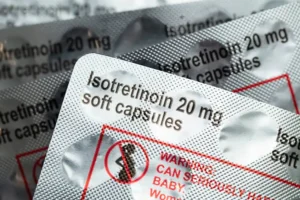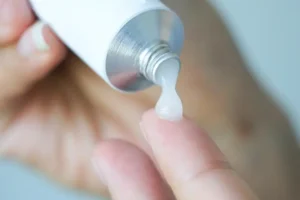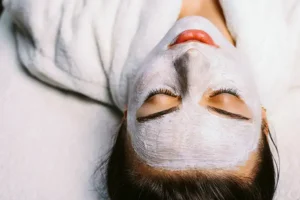What is Platelet-Rich Plasma (PRP) Therapy?
PRP therapy involves using a sample of the patient’s own blood, which is processed to isolate and concentrate platelets in the blood.
These platelets contain growth factors, such as platelet-derived growth factor (PDGF), transforming growth factor-beta (TGF-β), and vascular endothelial growth factor (VEGF). Growth factors are proteins that regulate cell growth and repair by signaling the skin to regenerate and produce collagen. When applied to the skin, PRP releases these proteins, which stimulate collagen production, improve skin healing, and enhance tissue regeneration.
PRP has been used in various fields of medicine for wound healing and tissue repair, but its application in cosmetic dermatology has been growing rapidly due to its minimally invasive nature and ability to promote the skin’s natural healing processes.
Medical Evidence Supporting PRP for Acne Scars
The effectiveness of Plasma Therapy in treating acne scars has been the focus of several studies, many of which highlight its benefits, when combined with other therapies. Researchers showed that results of microneedling at the same time as plasma therapy, versus just microneedling for post-acne scars led to more significant improvements in scar reduction. Patients receiving the combined treatment experienced a higher rate of improvement, with 43% showing excellent results compared to 20% in the microneedling-only group.
Microneedling or laser treatments create microscopic wounds in the skin, allowing PRP to penetrate deeper and work more effectively.
PRP treatments have been found to shorten recovery times following invasive procedures and reduce side effects such as erythema (redness) and crusting, so its effectiveness is proven for any acne scar treatment.
Advantages of PRP for Acne Scars
- Natural Healing: PRP uses the patient’s own blood, reducing the risk of allergic reactions or complications. It is considered safe and minimally invasive compared to other scar treatment methods.
- Improved Recovery: When combined with microneedling or lasers, PRP not only enhances results but also shortens recovery times, leading to faster skin healing.
- Versatility: PRP can be used for a variety of skin types and scar severities, making it a flexible treatment option for those seeking smoother, clearer skin.
PRP for Prevention of New Acne Scarring
If you’re prone to severe acne breakouts, early intervention with PRP therapy may provide a proactive approach to minimizing scarring before it becomes a lasting issue. It encourages a more uniform regeneration process, which can prevent the deep indentations typically caused by severe acne. As a result, instead of waiting for scars to develop and then treating them, PRP allows the skin to better withstand the damage from inflamed acne, reducing the likelihood of uneven healing and scar formation.
Long-Term Effects of PRP
Plasma continues to promote collagen production and skin remodeling for several months after the initial treatment. Here’s a breakdown of how PRP works over time:
- Collagen Production: PRP contains growth factors which play an important role in signaling fibroblasts (cells that produce collagen) to increase their activity. These growth factors bind to cell receptors, stimulating a series of molecular signals that lead to the production of collagen. Collagen is the main structural protein in the skin, and increased production helps to replace the damaged tissue in acne scars with healthier, more organized skin.
- Tissue Remodeling: Over time, PRP promotes the remodeling of tissue by enhancing cellular turnover. The activated platelets release proteins that improve the extracellular matrix, the framework that gives skin its structure. These proteins not only stimulate collagen but also help to organize how new tissue is formed, ensuring it aligns better with the surrounding undamaged skin. This gradual reorganization of the tissue is why scar texture and depth improve over several months.
- Angiogenesis (Formation of New Blood Vessels): Growth factors in PRP support the formation of new blood vessels. By improving blood supply to the treated area, PRP enhances oxygen and nutrient delivery, which sustains long-term tissue regeneration and skin quality. This process continues well beyond the initial weeks after treatment, further aiding in the long-term improvement of skin health and scar appearance.
- Fibroblast Proliferation: PRP encourages the proliferation of fibroblasts (the cells responsible for producing connective tissue components like collagen). Even after the initial treatment, the continuous stimulation of fibroblasts helps to replace old, damaged tissue with new, healthy tissue. This prolonged fibroblast activity means the skin keeps repairing and improving for months.
- Anti-Inflammatory Effects: PRP reduces the chronic inflammation associated with acne scars. Growth factors like TGF-β help regulate immune responses and reduce prolonged inflammation in the skin, which can otherwise hinder proper healing and tissue regeneration.
References:





